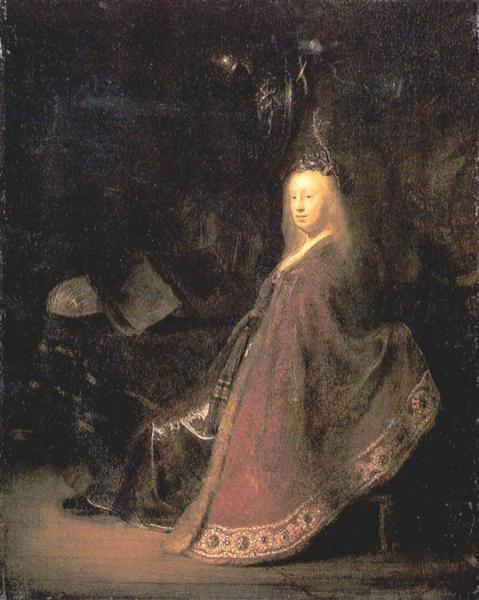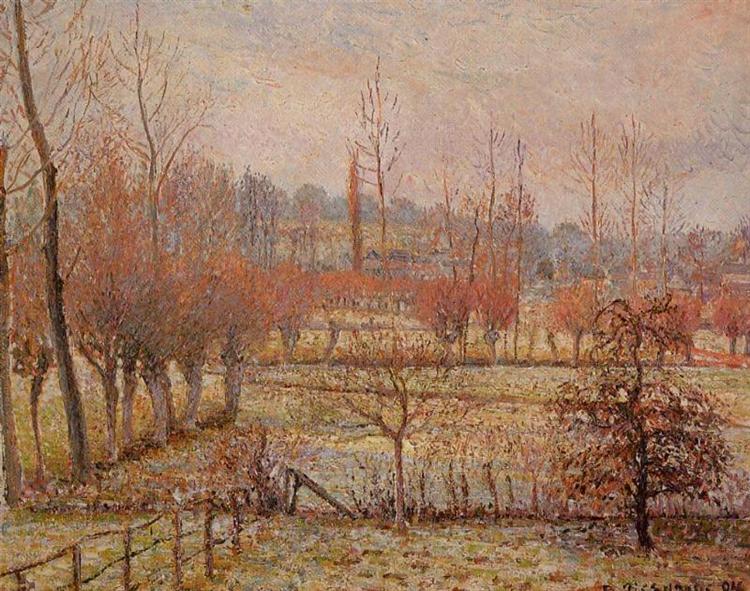Description
James McNeill Whistler, a painter who overflowed the borders of impressionism with a unique mastery for atmospheric and tonal expression, presents us in "Marine Landscape - Dieppe - 1886" (SeasCape - Dieppe - 1886) not only a vision of the sea, but a Deep and meditative sensory experience. This work, representative of the Whistler's Mature style, precisely captures the essence of the coast of Dieppe, a favorite destination of the nineteenth -century Parisian bourgeoisie.
Let's first analyze the composition of the painting. Whistler opts for a seemingly simple but meticulously calculated structure. The horizon line is approximately in the upper third of the painting, According to the rule of thirds that is common in Western art, providing a dynamic balance between heaven and sea. This minimalist approach, in which wide color spaces and subtle textures predominate, is characteristic of the Whistler Marina series, where the atmosphere becomes the indisputable protagonist of the work.
The colors used are deliberately soft and ethereal. The tonalities of gray, blue and white predominate that allow the spectator to perceive a calm and tranquility inherent in the marine environment. Light and almost imperceptible brushstrokes suggest the movement of water and air, creating a feeling of infinity and vastness. This masterful use of color and atmosphere can be compared to the late works of J. M. W. Turner, although Whistler is distinguished by his search for simplicity and the media economy to achieve a deep impact.
In "Marine Landscape - Dieppe - 1886" there are no human figures, which reinforces the feeling of loneliness and contemplation. The absence of human characters implies a deliberate departure from the narrative approach in favor of a more abstract and universal experience. This decision could reflect the influence of the aesthetic philosophy of "harmony in gray and silver" that Whistler defended, where each element in painting contributes to a harmonious whole without resorting to an anecdote or concrete history.
This painting He also reveals Whistler's interest in the concept of "tone", where color variations are minimized to create a sense of visual unit. The subtlety of tonal work in this painting is a testimony of Whistler's technical domain, capable of transmitting a wide range of emotions and moods with a restricted palette.
In historical terms, Dieppe was a significant place for Whistler. After his controversial trial against critic John Ruskin, who affected both his professional and personal life, Whistler moved to the coast to work in a quieter atmosphere and far from London's agitation. This retirement was fruitful, since it produced some of his most introspective and poetic works. "Marine landscape - Dieppe - 1886" belongs to this period, encapsulating both the serenity of the place and the introspection of the artist.
In short, "Marine Landscape - Dieppe - 1886" is a work that celebrates stillness and reflection through a subtle composition and a discreet palette. Whistler invites us to a contemplative trip, moving away from the daily bustle to immerse ourselves in a pure and ethereal vision of the sea. His ability to capture the essence of a fleeting moment on the coast is a testimony of his artistic genius and his deep understanding of the relationship between light, color and human emotion.
KUADROS ©, a famous paint on your wall.
Hand-made oil painting reproductions, with the quality of professional artists and the distinctive seal of KUADROS ©.
Art reproduction service with satisfaction guarantee. If you are not completely satisfied with the replica of your painting, we refund your money 100%.











